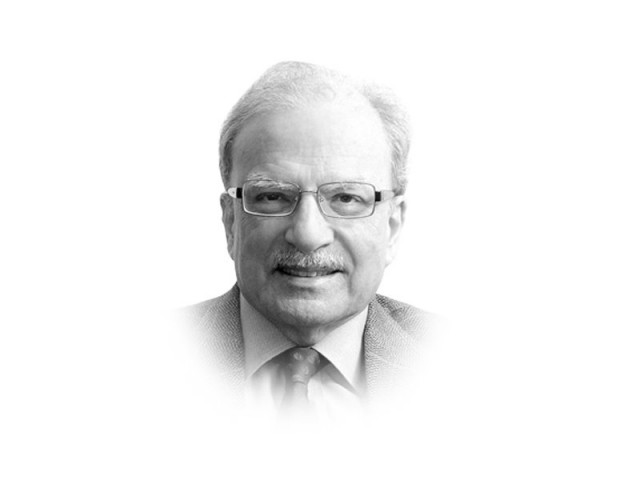South Asians in the US
Study showed that acts of violence attributed to non-Muslims in the population were greater in number

The writer is a former caretaker finance minister and served as vice-president at the World Bank
South Asians now have a fairly large presence in the United States. What made that possible is the 1965 Immigration Act signed into law by president Lyndon Johnson as a part of his effort to do away with colour-based discrimination in his country. Earlier he had pushed through Congress the Voters Registration Act that sought to deal with widespread discrimination against the registration of black voters. The 1965 Immigration Act did away with the bias against the issuance of migration visas to non-European nonwhites. What encouraged the migration of South Asians into the United States was the provision in the legislation that allowed those who were already in the country to sponsor close relatives to enter the country. It is interesting that this provision was inserted into the act by a congressman who wanted to restrict the entry of non-Europeans. Since the number of Europeans who had already settled in the country was very large compared to the people from other parts of the world, there was an assumption that this provision would work in their favour. It did not work out that way.
Visa preferences for family members were lauded by the rightist American Legion magazine, as “a naturally operating national-origins system.” There was a strong belief that this provision would favour immigration from the northern and western European countries that, at the time, dominated the American population. That did not happen. What occurred instead was that ‘chain migration’ became a major source of entry into the United States by the Asians, in particular those from South Asia. My own family is a good example of this chain. My son, born in the United States, is a citizen. When he turned 18 he sponsored his mother to become a citizen. When she did, she sponsored me and in three years I became a citizen.
No firm estimates are available as to how many people from the South Asian subcontinent live in the United States. Informed guesses, including those by a group that calls itself the South Asian Americans Leading Together suggest that about 4.3 million of South Asian origin are now in the country with the majority made up not of new arrivals but of those born in America. Of these India probably has 3.2 million while 409,000 are from Pakistan and 177,000 from Bangladesh. Small communities of Sri Lankans, Nepalese and Bhutanese make up the rest. Indians and Pakistanis are the third and seventh largest Asian American ethnic groups, respectively. Of the three largest South Asian communities in the United States, Bangladesh has had the highest growth in the 10-year period of 2000 to 2010. Its size increased 157 per cent followed by 100 per cent increase in the Pakistani community and 68 per cent for the Indians.
The South Asians are highly educated and trained and have done well in terms of incomes earned. The average per capita South Asian income is some 10 to 15 per cent higher than the US average. They are also gaining political importance. At one point two of the 50 governors in the country were of Indian origin; one of them entered the presidential race on the Republican side while the other, Nikki Haley of South Carolina, is now the United States ambassador to the United Nations. She and Kamala Harris, also of Indian origin, elected to the US Senate from California are being mentioned as possible presidential candidates in 2020.
During the campaign for the presidency, Trump painted a picture of a typical migrant that was not borne out by reality. There were plenty of facts available in a study done by a number of scholars to mark the 50th anniversary of the 1965 Act. It showed that an average migrant was better and more law abiding than an average American. During the campaign, candidate Trump also proposed a ban on Muslims entering the country since they were likely to commit acts of terrorism. The study showed that acts of violence attributed to non-Muslims in the population were greater in number per 1,000 of the population than those committed by Muslims. Also, Muslim immigrants were 25 per cent more likely than US-born residents to have a college degree, and many have valuable high-tech skills. According to a Pew Research Centre Study, 67 per cent of US Muslims are under the age of 40, almost twice the proportion of the US general public.
The RAISE proposes to use a points system to determine who does or does not qualify to enter the United States. It weighs factors like education, fluency in English, job-offer salary and investment portfolio to distinguish between the worthy and the non-worthy. Judging by the socioeconomic situation of the South Asians who are already in the country, the point system would likely favour the applicants from that part of the world. The proposed bill if it becomes the law of the land would increase the South Asian migration to the United States — at least the share of the people of that region entering America.
Published in The Express Tribune, August 14th, 2017.
Like Opinion & Editorial on Facebook, follow @ETOpEd on Twitter to receive all updates on all our daily pieces.















COMMENTS
Comments are moderated and generally will be posted if they are on-topic and not abusive.
For more information, please see our Comments FAQ